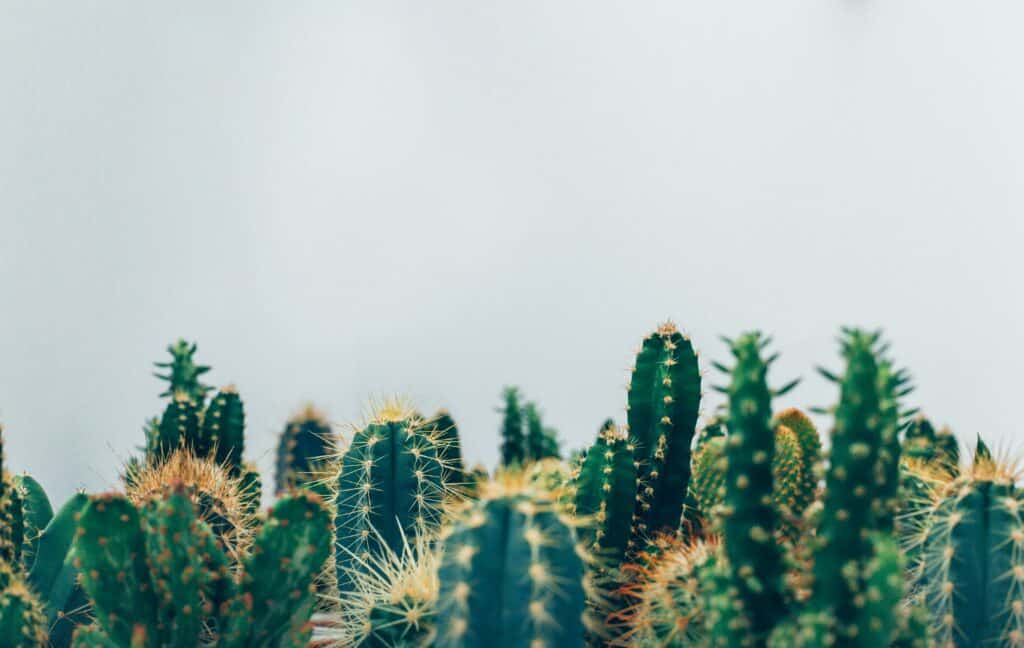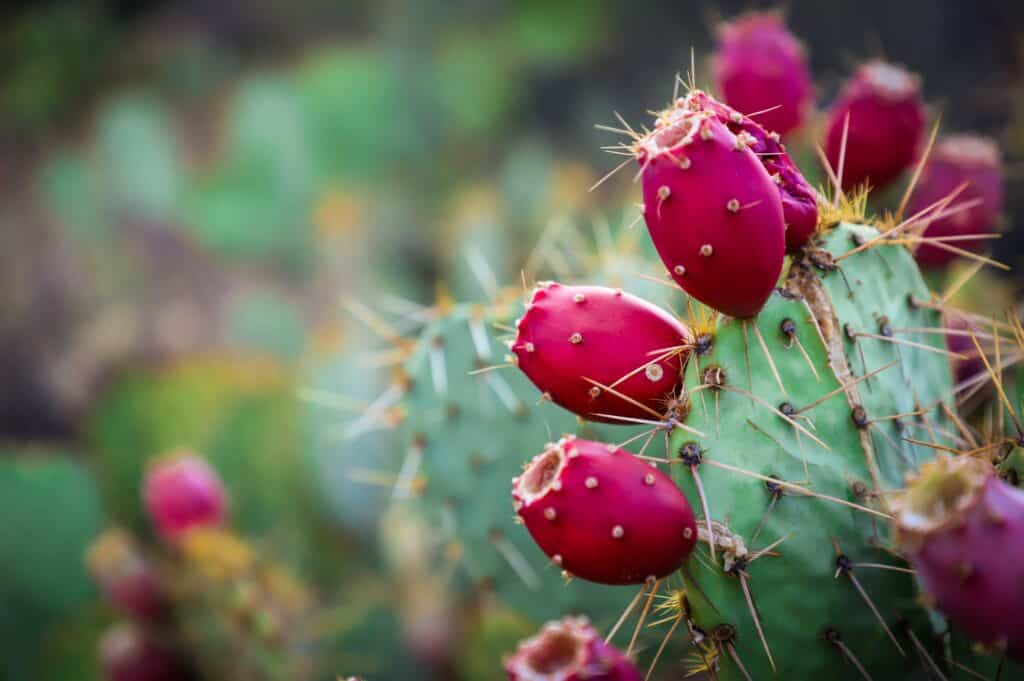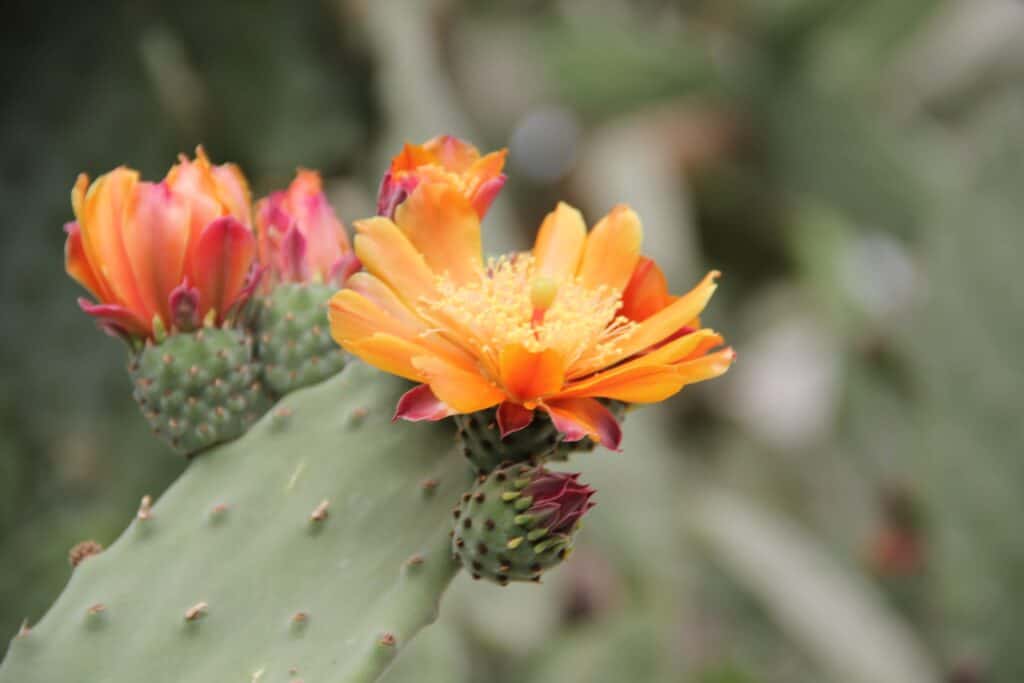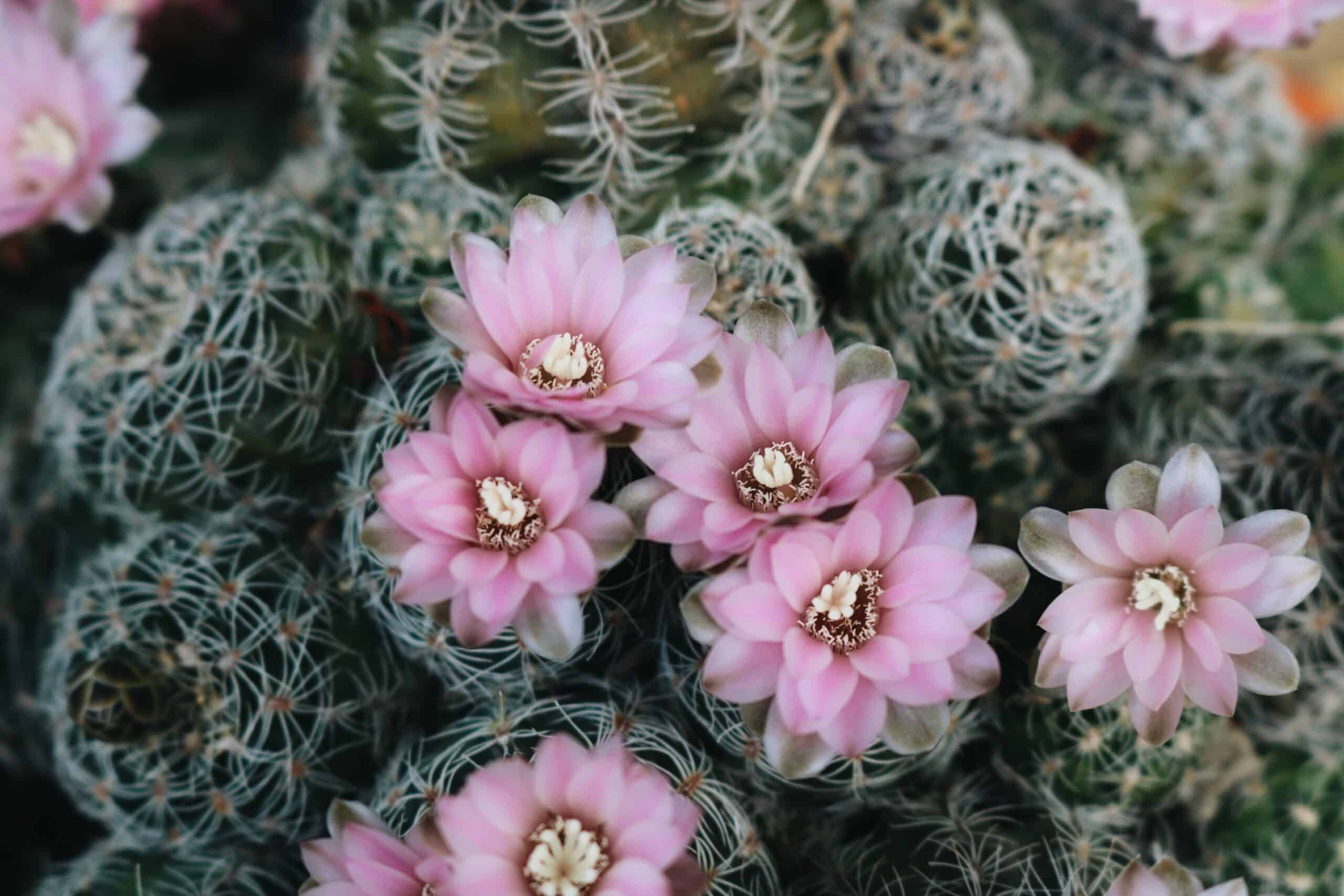Cacti have been admired and cultivated for centuries for their unique shapes and sizes and their rich cultural symbolism. These resilient plants are found in deserts and arid regions worldwide and have adapted to survive in harsh and challenging environments. Their ability to store water in their fleshy stems and leaves allows them to withstand long periods of drought and extreme heat. Learning how to care for your cacti is very simple!

Beyond their practical uses, cacti have also held symbolic significance in different cultures throughout history. In some Native American traditions, the cactus represents protection and endurance, while in Mexican culture, the cactus has been a symbol of strength and resilience, and it’s even featured on the country’s coat of arms. The cactus has also been used as a medicinal plant for centuries, with different cultures using different parts of the plant to treat various ailments.
In recent years, cacti have become increasingly popular as indoor and outdoor plants, particularly among those who live in urban areas and may not have access to green spaces. Cacti are relatively easy to care for and require minimal maintenance, making them an excellent choice for beginners who are just starting to build their plant collection.
How to Care for Your Cacti
- Choosing the Right Pot and Soil
Choosing the right pot and soil for your cacti is crucial for their healthy growth and survival. The wrong pot or soil can lead to waterlogging, root rot, and other issues that can cause irreversible damage to your plant. When choosing a pot, look for one that is not too big for your cactus, as this can lead to water pooling around the roots. A good rule of thumb is to choose a pot that is just a little bit bigger than the cactus.
In addition to the pot size, it’s essential to select a pot that has drainage holes. These holes allow excess water to drain out of the soil and prevent waterlogging, which can be deadly for cacti. If you find a pot that you love that doesn’t have drainage holes, you can still use it by adding a layer of gravel or broken clay pots at the bottom of the pot. This will allow water to drain freely and prevent your cactus from sitting in water.
When it comes to soil, cacti prefer a well-draining mix that does not retain too much water. You can buy a cactus soil mix from a garden center, which is formulated specifically for cacti and succulents. This soil mix is usually a blend of sand, perlite, and peat moss, which provides good drainage while retaining some moisture. If you prefer to make your own soil mix, you can mix regular potting soil with sand or perlite to create a well-draining mix. Be sure to avoid heavy garden soils, which can hold too much water and suffocate your cactus roots.

- Watering Your Cacti
Watering is an essential part of how to care for your cacti, but it can also be the most challenging. As mentioned before, overwatering is the most common mistake people make when caring for cacti. Overwatering can lead to root rot, fungal diseases, and even death. Therefore, it’s crucial to understand how often and how much to water your cacti.
Cacti are desert plants and are adapted to survive in arid environments, where water is scarce. They have the ability to store water in their stems and leaves, which allows them to survive long periods of drought. As a result, they do not require frequent watering, and it’s better to underwater than overwater them.
To determine when to water your cacti, you should first check the soil. Insert your finger about an inch deep into the soil. If the soil feels dry to the touch, it’s time to water your cacti. You can also use a moisture meter to measure the moisture level in the soil. If the moisture level is below the desired level, it’s time to water your cacti.
When watering your cacti, it’s essential to use the right technique. Use a watering can with a narrow spout or a spray bottle to avoid getting water on the leaves and stems. Water your cacti thoroughly but avoid soaking the soil. Allow the water to drain out of the bottom of the pot, and then empty the saucer to prevent your cactus from sitting in water.
During the winter months, cacti enter a period of dormancy, and their water requirements decrease. Therefore, you should reduce watering during this period to prevent overwatering. In contrast, during the hot summer months, cacti may require more frequent watering. Keep an eye on the soil moisture and adjust your watering schedule accordingly.

- Providing Adequate Light
Cacti need a lot of sunlight to thrive. Providing adequate light is crucial for the healthy growth and development of your cacti and a key element of how to care for your cacti. Cacti are sun-loving plants that thrive in bright light and high temperatures, so it’s essential to provide them with the right amount of light. Without enough light, your cacti may become weak, leggy, and prone to disease.
Ideally, cacti should be placed in a spot where they can get at least six hours of direct sunlight a day. South-facing windows are the best option as they provide the most direct sunlight. However, east or west-facing windows can also work, especially during the winter months when the sun is lower in the sky.
If you don’t have a sunny spot in your home, or if you live in an area with limited sunlight, you can use artificial grow lights. LED grow lights are an excellent option for providing the right amount of light for your cacti. They are energy-efficient, long-lasting, and emit the right spectrum of light that your cacti need to grow and thrive.
When using artificial grow lights, it’s essential to place your cacti at the right distance from the light source. If you place your cacti too close to the light source, the leaves can burn and damage the plant. On the other hand, if the light source is too far away, your cacti may not get enough light to grow and develop correctly. As a general rule of thumb, keep the light source about six to twelve inches away from your cacti, depending on the type of light and the size of your cacti.
Providing adequate light is crucial for the healthy growth and development of your cacti. Whether you’re using natural or artificial light, ensure that your cacti get at least six hours of direct sunlight a day, or use LED grow lights to provide the right amount of light. Remember to place your cacti at the right distance from the light source to avoid burning or damaging the plant. With the right lighting, your cacti will thrive and grow into healthy, beautiful plants.

- Fertilizing Your Cacti
Fertilizing your cacti is an essential part of caring for them and ensuring that they grow healthy and strong. While cacti do not require a lot of fertilizer, providing them with the right nutrients can help them thrive and produce vibrant blooms.
When choosing a fertilizer for your cacti, it’s important to select one that is specifically formulated for cacti and succulents. These types of fertilizers typically have a high phosphorus content, which is essential for healthy root development and bloom formation. Look for a fertilizer with an N-P-K ratio of 2-7-7 or 2-10-10 for the best results.
It’s important to only fertilize your cacti during the growing season, which typically occurs in the spring and summer months. During this time, your cacti will be actively growing and producing new growth, making it an ideal time to fertilize.
When applying fertilizer, be sure to follow the instructions on the label carefully. Overfertilizing can harm your cacti, so it’s essential to apply the fertilizer at the recommended rate. It’s also important to avoid getting the fertilizer on the leaves of your cacti, as this can cause damage or burning.
If you’re growing your cacti in a soil mix that already contains fertilizer, you may not need to fertilize as often. However, if you notice that your cacti are not growing as well as they should or are not producing blooms, it may be a sign that they need a little extra nutrition.
Fertilizing your cacti is an important part of caring for them and ensuring that they grow healthy and strong. Choose a fertilizer specifically formulated for cacti and succulents, apply it only during the growing season, and follow the instructions on the label carefully. With the right fertilization, your cacti will thrive and produce beautiful, vibrant blooms.

- Pruning Your Cacti
Pruning your cacti is an optional but important step in ensuring healthy growth and blooming. While cacti are typically low-maintenance plants, they can benefit from occasional pruning to remove dead or yellowing leaves or branches and to encourage bushier growth. So you want to make this step a crucial one in how to care for your cacti.
When pruning your cacti, it’s important to use a clean, sharp knife or scissors. This helps to prevent the spread of disease and damage to the plant. It’s also important to wear gloves to protect your hands from the sharp spines.
Start by removing any dead or yellowing leaves or branches. These can be cut back to the base of the plant using a sharp, clean pair of scissors. This helps to promote healthy growth and can prevent the spread of disease to other parts of the plant.
You can also pinch off the tips of your cacti to encourage bushier growth. This can be done by using your fingers or a pair of pruning shears to snip off the tip of the stem. Pinching the tips of the cactus can encourage it to produce more lateral shoots, which can lead to a fuller, bushier plant.
It’s important to note that some cacti varieties may not respond well to pruning, so it’s important to research your specific plant before attempting to prune it. Additionally, if your cactus is in bloom, it’s best to avoid pruning until after the blooming period has ended, as this can cause the plant to lose its blooms.
In summary, while pruning your cacti is not essential, it can be beneficial in promoting healthy growth and encouraging bushier growth. Use a clean, sharp knife or scissors to remove any dead or yellowing leaves or branches, and consider pinching off the tips of your cacti to encourage bushier growth. Remember to research your specific cactus variety before pruning and avoid pruning during blooming periods.

- Protecting Your Cacti
Protecting your cacti is essential for ensuring their long-term health and survival. While cacti are generally hardy and resilient plants, they can still be damaged by extreme temperatures or pests. Here are some tips for protecting your cacti from potential threats:
Temperature
Cacti prefer consistent temperatures and can be damaged by extreme heat or cold. Keep your cacti away from drafty areas or areas that experience significant temperature fluctuations. During the winter months, it’s important to protect your cacti from frost by covering them with a blanket or moving them indoors.
Pests
Pests, such as mealybugs, spider mites, and scale insects, can damage your cacti by feeding on their tissues. If you notice any pests on your cacti, it’s important to take action immediately. Treat them with an insecticidal soap or neem oil, which can help to control the infestation without harming the plant.
Repotting
As your cacti grow, they may outgrow their pot and become root-bound. This can lead to stunted growth and poor health. To protect your cacti, it’s important to repot them every 2-3 years using a well-draining soil mix. This can help to ensure healthy growth and prevent disease or pest infestations.
Handling
Cacti have sharp spines that can cause injury if not handled carefully. When handling your cacti, it’s important to wear gloves and use a soft cloth or newspaper to protect your hands from the spines. Avoid touching the spines directly and be careful when moving your cacti to prevent damage to the plant.
Protecting your cacti is essential for ensuring healthy growth and long-term survival. Keep your cacti away from extreme temperatures, treat them immediately if you notice any pests, repot them every 2-3 years, and handle them carefully to avoid injury. By following these tips, you can enjoy a beautiful and healthy collection of cacti for years to come.
What we love from Amazon this week
Buy these wonderful flowers directly from Amazon:















